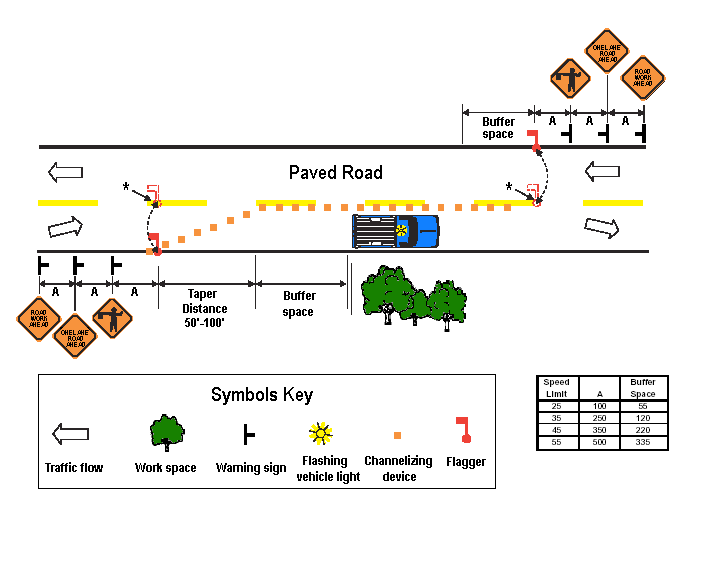Protecting Worker and Motorist Safety in Work Zones
Table of Contents
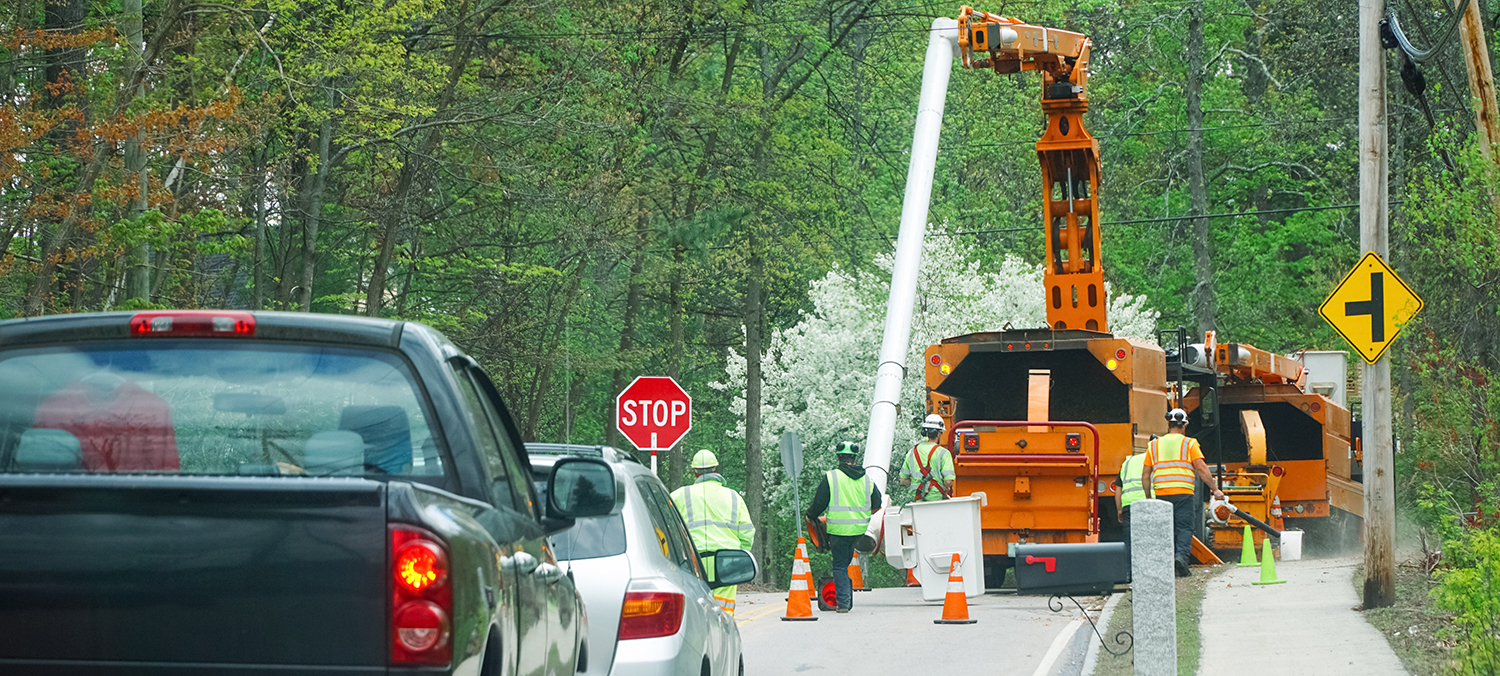
During active brush control work, equipment on the side of the road may distract drivers. Roadside managers need to plan how they will keep workers and motorists safe. Refer to the Manual on Uniform Traffic Control Devices for Streets and Highways for more detailed information on safely diverting traffic from a work area.
The following recommendations for conducting safe roadside brush control with equipment in the roadside are excerpted from “Tree and Brush Control For County Road Right-of-Way.”
Short-Term Roadside Work With No Encroachment on the Roadway
- Workers and equipment operate within 15 feet of the edge of the traveled way for up to one hour (see below for work lasting more than one hour).
- Whenever appropriate, vehicles should be parked in entrances and driveways. If that is not possible, vehicles should be parked on the shoulder as far from open traffic lanes as possible.
- Vehicles should be equipped with a yellow revolving light or yellow strobe light.
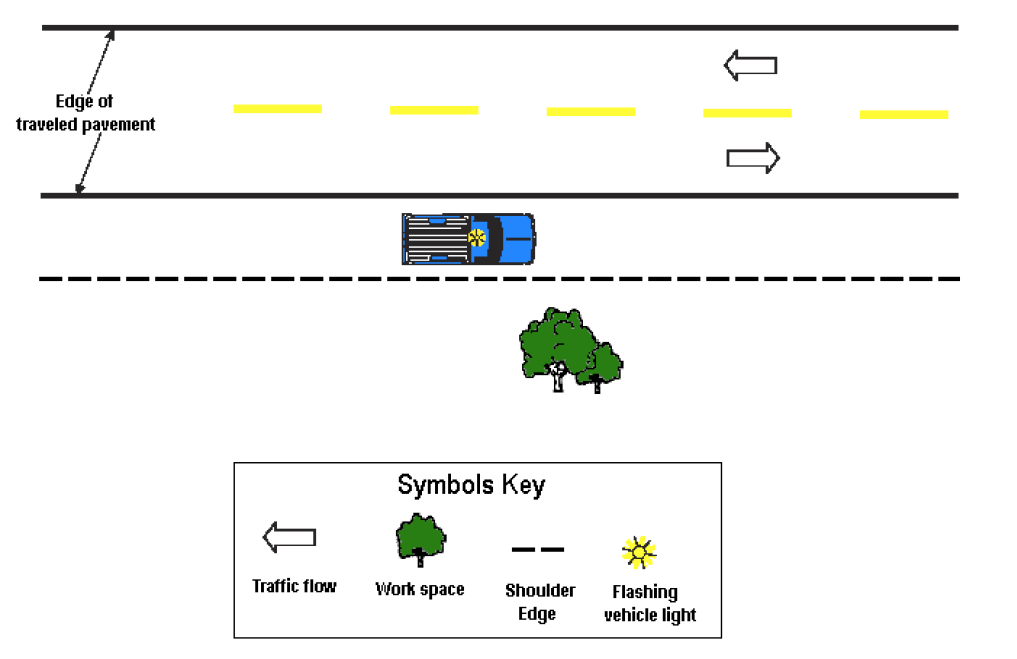
Lengthier Work and/or Minor Encroachment of a Work Zone Onto a Two-Lane Road
- This work can occur on either gravel or paved roads.
- The work could include chainsaw work, cut stump treatment, chipper work, foliar spraying, and basal bark spraying.
- Signage is required in the opposite lane of traffic only when sight distance is restricted.
- Traffic control via flaggers is not required if bidirectional traffic can move freely through the work area at a reduced speed.
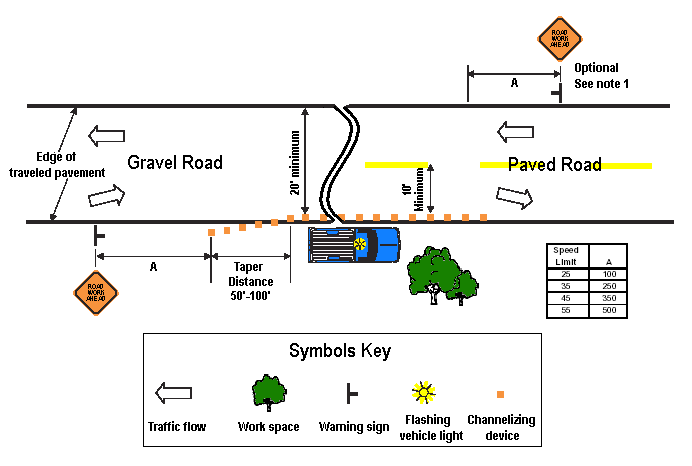
Major Encroachment and/or Lane Closure on a Gravel Road With Self-Regulating Traffic
- The work could involve the use of aerial lift trucks, tractors with boom mowers, excavators with brush cutters, tree shears, a bucket and thumb, and other heavy equipment.
- Diagram how lanes of the road would be closed for the brush control project during daylight hours.
- Traffic volume must be less than 2,000 vehicles per day.
- Work vehicles should not be parked on the opposite shoulder within 500 feet of the work area.
- Traffic in the open lane should be allowed to flow freely.
- Cone spacing should be based on the posted speed limit.
- Traffic control via flaggers should be required if:
- visibility is less than a quarter mile
- workers are on the road or close enough to the road that they need to be protected from traffic
- traffic flow is more than 15 vehicles per 15 minutes
- When access to the truck is necessary and the side being accessed is exposed to traffic, a 2-foot safety zone is required between the cones and the truck.
- Open lanes should be at least 10 feet wide. If a lane is 9 feet wide, it may remain open for short-term use if traffic is low in speed and volume and does not include long, heavy commercial vehicles. The lane should be closed if it is less than 9 feet wide.
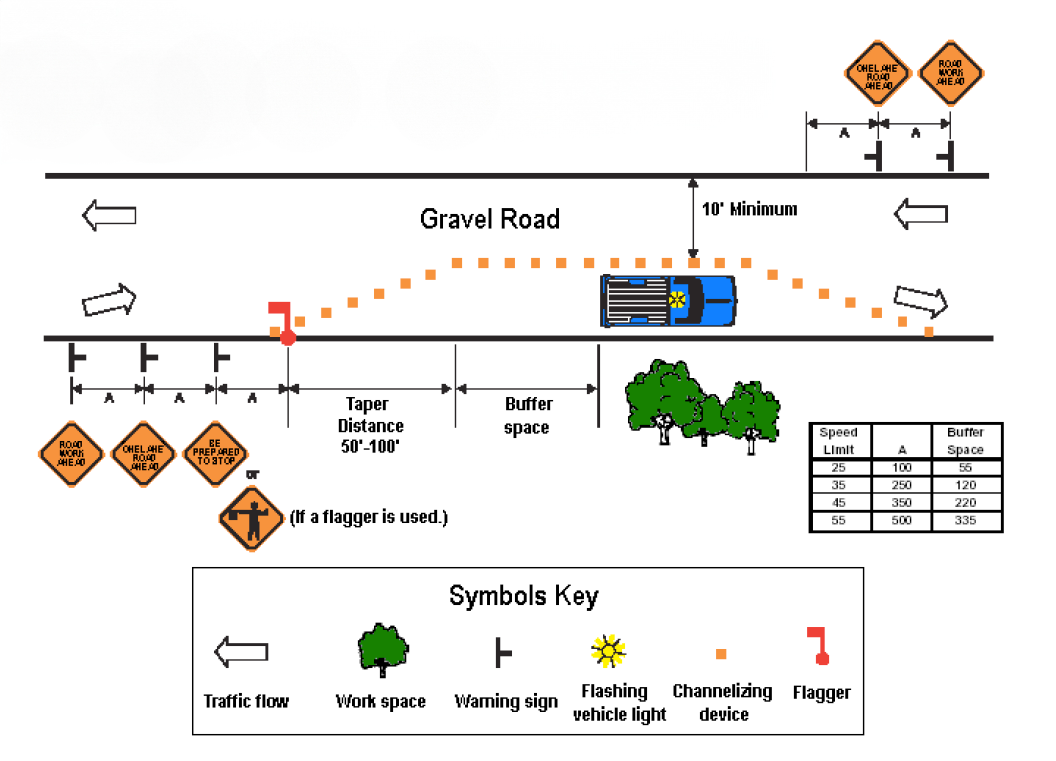
One Lane Closed of a Two-Lane Road for Less Than a Quarter Mile Long
- The work taking place could include extensive brush clearing, the use of excavators with brush cutters, tree shears, a bucket and thumb, and other heavy equipment.
- The work should take place during daylight hours only.
- Work vehicles should not be parked on the opposite shoulder within 500 feet of the work area.
- Cone placement guidelines:
- Space the cones 10 to 20 feet apart to create a taper that gradually narrows the amount of the road available to traffic.
- A minimum of five cones are to be used in a taper.
- Cones that are part of a taper around a curve should be placed at the following intervals:
- every 20 feet where the horizontal curve radius (a measure of the bend in the road) is less than 300 feet
- a minimum of every 50 feet where the horizontal curve radius is 300–1,000 feet
- every 120 feet when the speed limit is 60 miles per hour or above
- Individual cones that would interfere with the work may be omitted during work hours, except for cones in the taper, which are required at all times
- Traffic control flagger guidelines:
- The flagger should stop the first vehicle from the position shown in Figure 8.4 and then cross traffic to the other lane to stop other vehicles.
- Additional flaggers should be stationed at intersections or crossings within the work area to prevent vehicles from entering against the flow of traffic.
- For a short time, the length of the work area may change as much as half a mile to improve the flagger’s sight distance. For example, the work area and flagger’s sight distance may need to be adjusted to account for changing visibility conditions due to weather or the amount of daylight.
